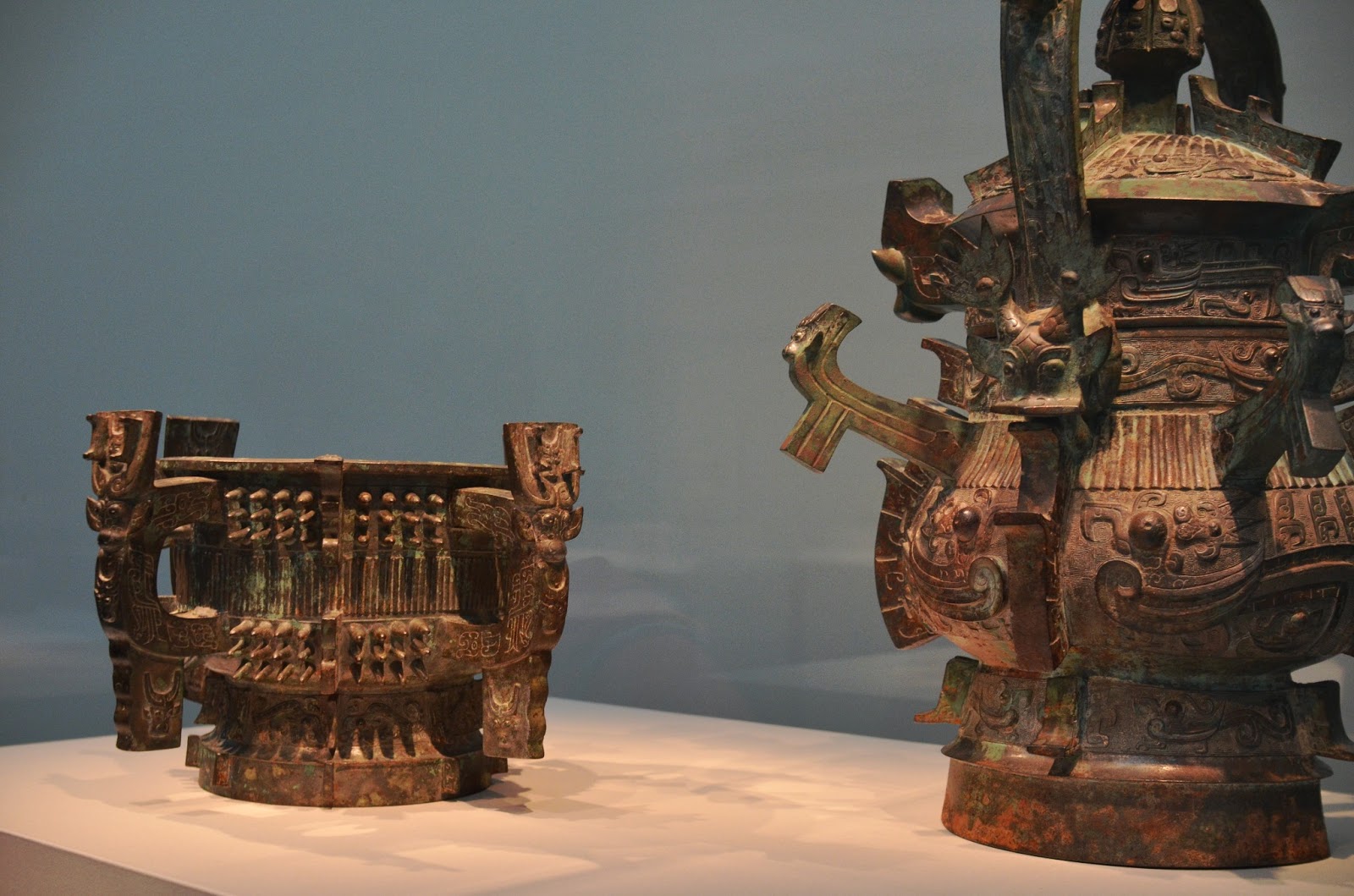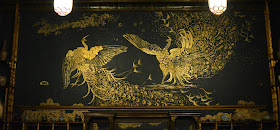Catering Series, Ep 5: Dulce de leche o(u) Confiture de lait?
|
"Step back in time to 1908...," played the introduction to the opulent Peacock Room at the Freer and Sackler Gallery Museum of Asian Art, a Smithsonian Institution. Just because the venue isn't as large as the Asian Art Museum in San Francisco, that doesn't mean the Freer gallery can't hold a light. The Peacock Room, a rich and illustrious once-private collection of wares from "Egypt, Iran, Japan, China, and Korea" highlighted perfectly Freer's belief that "all works of art go together, whatever their period." But of course, somewhere deep down, I couldn't help but aspire to one day amass a similar collection of porcelain and other vibrant wares for my future home. | ||


     
|


       |


    
|
As much as a I appreciate cultural art, especially of my own culture, I'm not much of an archaeology or art history buff as much I am just generally fascinated by all things ancient. It 's intriguing to find connections between an ancient society's cultural practices and beliefs and the era's prominent style of arts and crafts.
What will museums in the far future look like? Recently, I've been fascinated by the internet community and the subcultures, like of Adventure Time or of My Little Pony that consist of people united by networks of networks. Their bonds are as tenuous as they are strong. The internet's--not just childrens'--infatuation for the zany and random is constantly recurring. What does this reflect about our population? Our generation?
The closest answers I could find were from PBS's series, Off Book, a rather well-compiled set of short documentaries attempting to explain the rise of communities like Etsy, Lego Art, revival of 8-bit art, vandalism as art, street art, tattoo, steampunk, indie games. The internet's new role as a medium of art dissemination and the accessibility of art, especially digital art, means more artists, more voices. The power of anonymity and controlled disclosure allows for individual independence from societal constraints, like bias. From this perspective, it seems as though internet communities and art can be used to anticipate the trajectory of the human mind, and ultimately, extrapolate the future. That's not too far-stretched, is it?
 |  |
For instance, can food be considered art? I say food styling will definitely be making the history books and museums, if it ever dies at all. Different forms of social media, such as Instagram, Pinterest, have only buoyed the popularity of food styling, and I can't wait for the future in terms of technological advances that will inevitably occur, like Google Nose.
But anyways, now let's talk food. My last recipe for my Haitian dinner catering series, admittedly, features a dish infused with a little bit of innovation. Although Du Riz au Lait, or rice pudding, is a classic dessert of the island, I wanted to make something different. Probably because I didn't have a big enough pot to use. Perhaps we were low on milk. Or maybe it was because we were short on plastic or Styrofoam bowls, serving utensils. So what did I do?
I made it a rice cake. Keeping the palette similar to traditional rice pudding, I upped the ratio of rice to milk in this recipe. I used dulce de leche to add a richness that might be lacking from lessening the amount of milk. And suffice to say, it worked! The sweetness was subtle and not overpowering. Rather, the fact that the cake wasn't of a viscous consistency makes it a perfect complement to french vanilla ice cream and coffee.
|
rice cake baked in dulce de leche Serves 30 A perfect complement to a scoop of vanilla ice cream or even a cup of coffee for breakfast, this modified version of rice pudding carries the rich caramel-flavor of dulce de leche in harmony with the aroma of cinnamon. Adapted from here. Components:
|



No comments:
Post a Comment